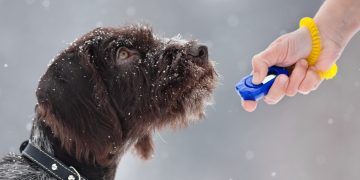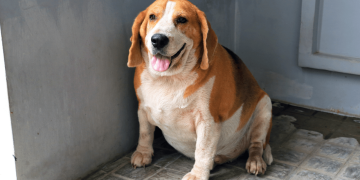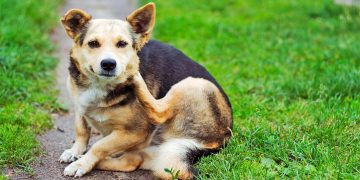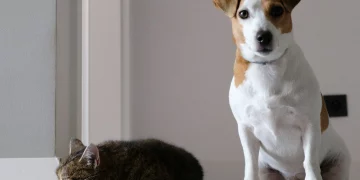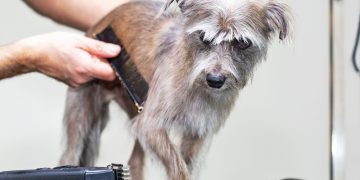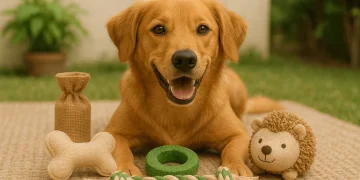Grooming is an essential part of pet care, and regular brushing plays a significant role in maintaining a shiny, healthy coat. Whether your pet has short fur or long, flowing locks, brushing not only helps keep their coat looking great but also supports their overall health. From preventing matting and tangling to distributing natural oils and stimulating blood flow, regular grooming provides numerous benefits for both you and your furry friend.
In this article, we’ll explore how brushing helps keep your pet’s coat shiny and healthy, and provide tips for grooming pets with different types of fur.
1. The Importance of Brushing Your Pet’s Coat
Brushing your pet’s coat is more than just a cosmetic activity—it has many health benefits. Here’s why regular grooming should be a priority in your pet care routine:
1.1. Removes Dirt and Debris
One of the primary reasons to brush your pet is to remove dirt, dust, and other debris that may have accumulated in their coat. This helps keep your pet cleaner and can reduce the amount of shedding inside your home. Regular brushing helps prevent dirt from becoming embedded in your pet’s fur, which can lead to skin irritation or infections.
1.2. Reduces Shedding
Brushing your pet regularly can significantly reduce shedding. While shedding is a natural process, brushing helps to catch loose hair before it ends up all over your furniture, clothing, and floors. For long-haired pets, brushing also helps prevent hair from matting, which can cause discomfort and even lead to skin problems.
1.3. Distributes Natural Oils
Your pet’s skin produces natural oils that keep their coat shiny and healthy. Brushing helps to evenly distribute these oils throughout their fur, promoting a smooth, lustrous coat. Regular brushing also stimulates blood flow to the skin, which can enhance your pet’s overall skin health.
1.4. Prevents Matting and Tangling
Matting occurs when hair tangles and forms clumps, which can be painful for your pet. For pets with long or thick coats, matting can be particularly problematic, leading to discomfort and even skin irritation. Regular brushing removes tangles before they develop into mats, making your pet’s coat easier to manage.
1.5. Strengthens the Bond with Your Pet
Brushing can be a wonderful bonding activity between you and your pet. The time spent grooming provides an opportunity to show your pet affection and build trust. It also gives you a chance to check for any unusual bumps, skin irritations, or parasites, so you can catch any health issues early.
2. Choosing the Right Brush for Your Pet’s Coat
Different pets have different coat types, and selecting the right brush is essential for effective grooming. Here’s a guide to help you choose the best brush for your pet:
2.1. Brushes for Short-Haired Pets
Pets with short coats tend to shed more frequently, but their grooming needs are generally easier to manage. Some brushes are designed to remove loose hair and stimulate the skin, making them ideal for short-haired pets.
- Slicker Brushes: These brushes have fine, closely spaced wire pins that help remove dead hair and debris. They can also be used to detangle any minor knots.
- Bristle Brushes: Soft bristle brushes are gentle on short-haired pets and can be used to smooth their coat, distribute natural oils, and remove loose hair.
- Rubber Brushes: These brushes are particularly useful for pets with short fur that shed heavily. The rubber material helps capture loose hairs and massage the skin.
2.2. Brushes for Long-Haired Pets
Long-haired pets require more attention, as their coats can easily become tangled and matted. These pets benefit from brushes designed to handle their specific needs.
- Pin Brushes: Pin brushes are ideal for long-haired pets because they gently untangle knots and mats without damaging the coat. The flexible pins also allow for comfortable grooming.
- Slicker Brushes: A slicker brush with fine wire pins is perfect for breaking up tangles and removing loose hairs. Be careful to be gentle around sensitive areas like the underarms and behind the ears.
- Undercoat Rakes: For double-coated breeds (like Huskies or Golden Retrievers), undercoat rakes are great for removing loose fur from the undercoat without damaging the top coat.
2.3. Brushes for Curly or Wavy Coats
Pets with curly or wavy coats, such as Poodles or Bichon Frises, require special brushes that can handle their unique fur texture.
- Curved Slicker Brushes: These brushes are designed to work through curly or wavy coats, helping to remove mats and tangles without breaking the hair.
- Coarse-toothed Comb: A coarse-toothed comb can help separate curls and prevent mats from forming. It’s especially useful for pets with dense coats.
2.4. Brushes for Cats
Cats have different grooming needs depending on their coat length. For short-haired cats, a soft bristle brush or rubber brush is often sufficient, while long-haired cats will need a slicker brush or wide-tooth comb to prevent tangling.
- Cat-Specific Brushes: Make sure to use brushes designed for cats, as they are gentler on their sensitive skin. Some cats may be more sensitive to brushing, so start slow and be gentle.

3. Brushing Techniques: How to Brush Your Pet Effectively
Now that you’ve chosen the right brush, it’s important to use the proper brushing techniques to ensure your pet’s comfort and safety.
3.1. Start Slowly and Be Gentle
If your pet isn’t used to being brushed, start slowly and gently. Begin with short grooming sessions and gradually increase the time as your pet becomes more accustomed to the process. Praise and reward your pet for good behavior to make the experience more enjoyable.
3.2. Brush in the Direction of Hair Growth
Always brush in the direction of the hair growth, starting at the head and working your way toward the tail. This prevents discomfort and reduces the risk of pulling on the hair. For long-haired pets, use a gentle, slow motion to work through tangles without causing damage.
3.3. Be Mindful of Sensitive Areas
Certain areas of your pet’s body are more sensitive than others, so take care when brushing these spots. These areas include the belly, under the legs, around the ears, and the tail. Use extra caution when brushing sensitive spots and avoid pulling or tugging too hard.
3.4. Brush Regularly
Regular brushing is essential for maintaining a healthy coat. The frequency of brushing will depend on your pet’s coat type:
- Short-haired pets: Once or twice a week is usually enough to keep their coat in good condition.
- Long-haired pets: Pets with long hair may need daily brushing to prevent tangles and mats.
- Curly-haired pets: Curly or wavy coats require frequent grooming, at least every two to three days, to prevent mats and tangles.
3.5. Check for Skin Problems
As you brush your pet, take the opportunity to check for any signs of skin problems such as rashes, bumps, sores, or fleas. Early detection can help prevent more serious health issues down the line. If you notice anything unusual, consult your veterinarian for advice.
4. Additional Grooming Tips for Specific Breeds
Certain dog and cat breeds have unique grooming needs that may require extra attention. Here are some additional grooming tips for specific types of pets:
4.1. Long-Haired Dog Breeds: Long-haired breeds, such as Shih Tzus, Maltese, and Afghan Hounds, require regular grooming to prevent their fur from matting. A high-quality pin brush is essential for these breeds, and regular haircuts may be necessary to keep their coat manageable.
4.2. Double-Coated Breeds: Dogs like Huskies, Samoyeds, and Golden Retrievers have double coats, which require frequent brushing to remove the undercoat and prevent matting. An undercoat rake is ideal for this purpose.
4.3. Short-Haired Cats: While short-haired cats require less grooming, they can still benefit from regular brushing to help reduce shedding. A soft bristle brush or grooming glove will help keep their coat sleek and healthy.
4.4. Hairless Breeds: Cats like the Sphynx, or hairless dogs, still need grooming despite lacking fur. These pets require regular baths to remove oils that would normally be absorbed by their fur. A gentle rub-down with a soft cloth can help keep their skin clean and healthy.
5. Conclusion: Grooming Is Key to Your Pet’s Health
Regular brushing is essential for maintaining your pet’s coat, promoting healthy skin, and preventing potential health problems. By choosing the right brush, using proper grooming techniques, and brushing your pet regularly, you can ensure that your furry friend looks and feels their best. Remember, grooming isn’t just about keeping your pet looking good—it’s about ensuring their overall health and well-being.
Whether you have a short-haired cat or a long-haired dog, taking the time to brush your pet is one of the best things you can do to ensure their comfort, happiness, and health.





